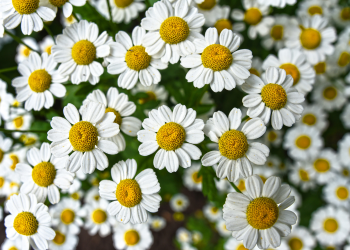Chamomile Growing Guide for Beginners
How to Grow, Harvest, and Use This Calming Herbal Remedy at Home
Chamomile is one of the most popular medicinal herbs — and for good reason. Known for its gentle calming effects, chamomile has been used for centuries to promote better sleep, ease digestion, and reduce stress naturally.
The best part? It’s one of the easiest herbs to grow at home, even if you’re new to gardening.
In this guide, we’ll walk you through everything you need to know to grow chamomile successfully — right from your backyard or container garden.
Why Grow Chamomile?
Chamomile isn’t just beautiful — it’s functional.
Benefits of Chamomile:
- Natural sleep aid
- Eases anxiety and stress
- Soothes digestive upset
- Anti-inflammatory properties
- Makes a delicious calming tea
Plus, growing your own means you’ll have a fresh supply of organic, chemical-free flowers ready for tea, salves, or herbal remedies.
What Type of Chamomile Should You Grow?
There are two main types of chamomile for home gardens:
1. German Chamomile (Matricaria chamomilla)

- Best for tea
- Grows as an annual (re-seeds easily)
- Taller, bushier plant

2. Roman Chamomile (Chamaemelum nobile)
- Low-growing perennial
- Works well as ground cover
- Milder flavor for tea
For beginners, German Chamomile is often the best choice for a steady harvest.
How to Plant Chamomile
Growing Conditions:
- Full sun to partial shade
- Well-drained soil
- Prefers cooler temperatures
Planting Instructions:
- Sow seeds directly outdoors after the last frost, or start indoors 4-6 weeks early.
- Sprinkle seeds on the soil surface — chamomile needs light to germinate.
- Keep soil moist until seedlings emerge (7-14 days).
- Thin seedlings to 6-8 inches apart.
How to Care for Chamomile
- Water lightly — chamomile prefers slightly dry soil.
- No heavy fertilization needed.
- Harvest regularly to encourage more blooms.
Chamomile is a low-maintenance herb perfect for beginner gardeners.
Harvesting Chamomile Flowers
- Harvest flowers when they are fully open.
- Cut stems early in the morning for the best flavor.
- Dry flowers in a warm, dark place for long-term storage.
Once dried, you can store them in an airtight jar for tea or herbal remedies.

How to Use Chamomile
The most popular use for homegrown chamomile is tea!

Basic Chamomile Tea Recipe:
- Steep 1 tablespoon of dried flowers in hot water for 5-10 minutes.
- Strain and enjoy with honey or lemon.
Chamomile can also be used in:
- Herbal salves
- Bath soaks
- Infused oils
- Calming skin sprays
Final Tips for Growing Chamomile
- Companion plant with mint or basil for natural pest control.
- Let some flowers go to seed for next year’s crop.
- Be gentle when harvesting — flowers bruise easily.

